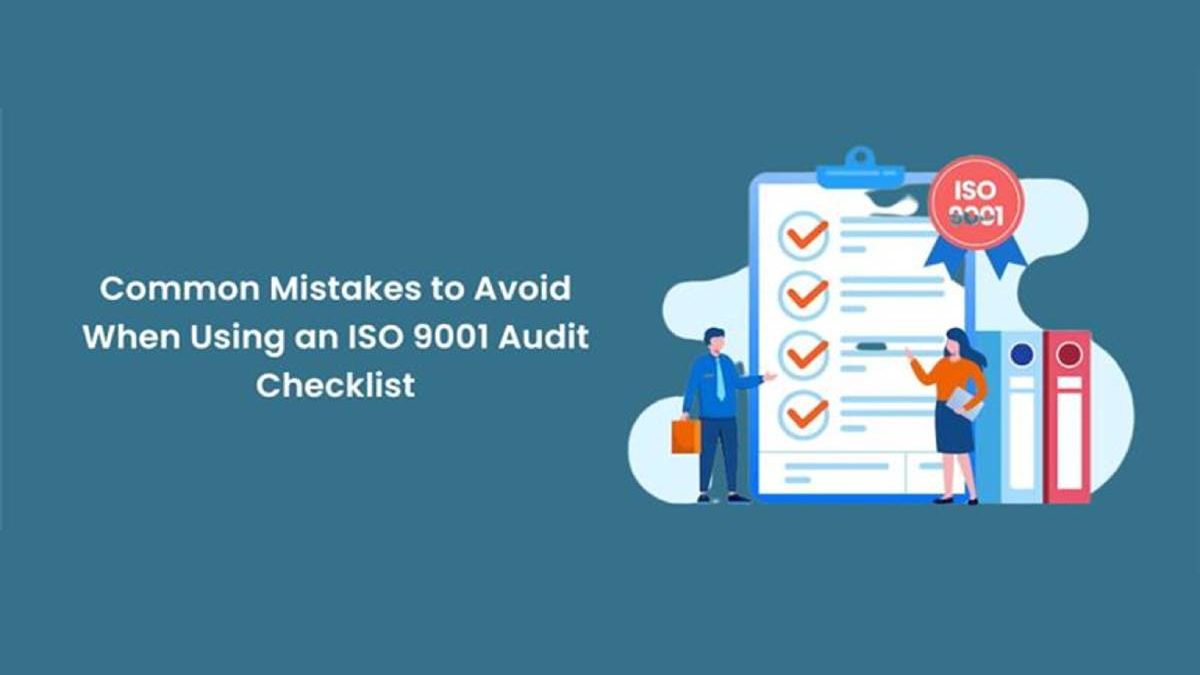The ISO 9001 Certification is a significant accomplishment for businesses looking to improve their quality management procedures and show a dedication to satisfying client needs. Audits are performed as part of the ISO 9001 certification process to evaluate a company’s conformity with the standard’s standards. Auditors can utilise an ISO 9001 Audit Checklist as a helpful tool to methodically assess a company’s quality management system. Nevertheless, despite its value, improperly employing an ISO 9001 Audit Checklist might result in standard errors. To guarantee a successful audit process and a straightforward road to ISO 9001 Certification, in this blog we will explore some typical pitfalls to avoid while utilising an ISO 9001 Audit Checklist.
Table of Contents
Understanding ISO 9001 Certification and Audit Checklist
An international standard called ISO 9001 outlines the requirements for a quality management system. Companies that receive ISO 9001 Certification have proven they can continuously deliver goods and services that satisfy customers while increasing consumer satisfaction. A tool used in the audit process to evaluate a company’s adherence to the standards of the standard is the ISO 9001 Audit Checklist.
Common Mistakes to Avoid with ISO 9001 Audit Checklist
The following are common mistakes to avoid while using the ISO 9001 Audit Checklist:
- Using a faulty ISO 9001 Audit Checklist might cause crucial elements of the company’s quality management system to be missed. Make sure the checklist includes all pertinent ISO 9001 standard clauses and standards.
- The audit’s efficacy might be hampered if the ISO 9001 Audit Checklist is viewed as a rigorous checklist to be crossed off. For a thorough evaluation, auditors should use the checklist as a reference and be willing to investigate associated procedures and documentation.
- Evaluations can be flawed if they focus primarily on the ISO 9001 Audit Checklist without considering the organisation’s particular procedures and setting. The checklist should be used in conjunction with knowledge about the goals and activities of the organisation.
- Due to prejudice or pressure from the organisation, auditors may ignore or minimise nonconformities found during the audit. Objectively addressing nonconformities and ensuring they are correctly recorded and fixed are vital.
- During the audit, drawing conclusions only partially supported by the data collected via interviews is risky. Auditors should use verifiable evidence to back interview results to substantiate their findings.
Best Practices for Using ISO 9001 Audit Checklist
The following recommended practices should be taken into account to guarantee a successful audit procedure and maximise the ISO 9001 Audit Checklist:
- Before beginning the audit, auditors should get familiar with the organisation’s quality management system and the ISO 9001 standard.
- Adjust the ISO 9001 Audit Checklist to the organisation’s unique procedures and environment while addressing all pertinent standard provisions.
- To guarantee fair and accurate evaluations, maintain objectivity and impartiality throughout the auditing process.
- During the audit process, interact with the appropriate stakeholders to thoroughly understand the organisation’s procedures.
- Utilise both interviews and written information to support audit findings and conclusions.
- Utilise the audit process to pinpoint areas that might use improvement and offer insightful suggestions for improving the quality management system.
- Make that any discovered nonconformities are accurately documented and dealt with through the proper remedial procedures.
Conclusion
An ISO 9001 Audit Checklist is crucial for establishing if a company complies with the ISO 9001 standard and is prepared for certification. By avoiding common mistakes, auditors may conduct effective audits that are thorough and give the company helpful information and opportunities for development. Obtaining ISO 9001 certification promotes a culture of excellence and continuous improvement and enhances an organisation’s reputation. By following best practices and effectively implementing the ISO 9001 Audit Checklist, organisations may confidently achieve ISO 9001 Certification and demonstrate their commitment to offering their customers high-quality products and services.

